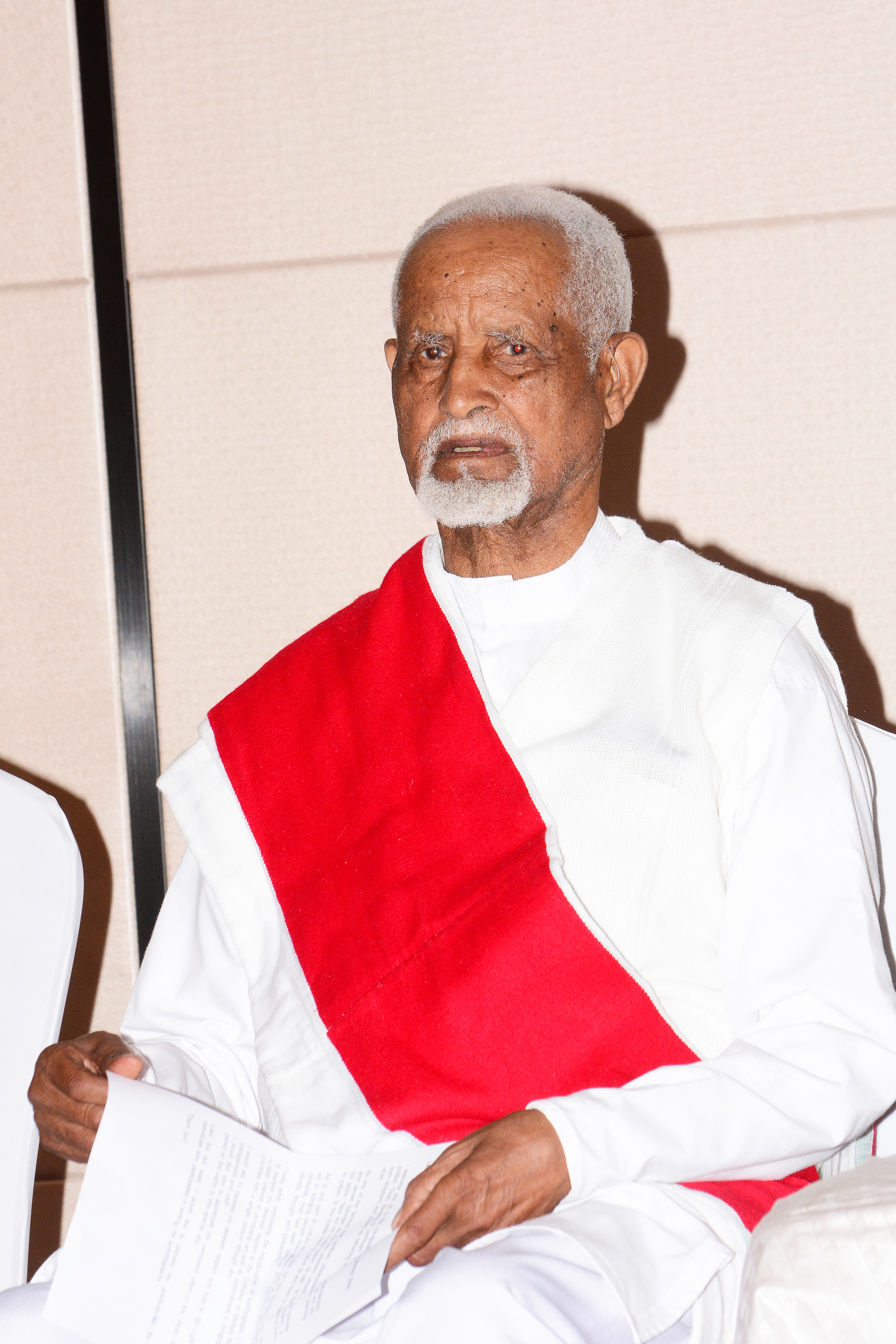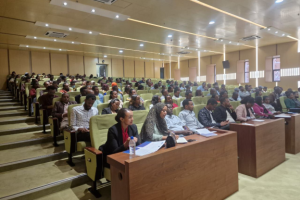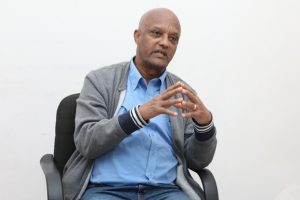
Everything changes. Nothing lasts forever in life. All and sundry living under the sun leave no stone unturned with the intention of making ends meet and standing on their feet. By its very nature, as life is not a bed of roses, everyone makes an effort to change life for the better. But nobody knows what the future will hold in store except wrestling with life challenges every so often.
As a matter of fact, unless one passes through many twists and turns, it will be easier said than done to achieve the desired goal. The Holy books say by the sweat of your brow, you will eat your food until you return to the ground, since from it you were taken; for dust you are and to dust you will return. Sometimes, everything turns its back on people.
No matter how hard people make an effort to harvest the fruit of success, they cannot materialize their dreams. This time, as they do not have any other options, they curse their luck over and over again. Sadly, some of them end up going to meet their maker devoid of making their dreams become a reality. However, the journey of life continues uncontrollably.
The intended target of this writer is not to attach significance to the nittygritty of the dark and bright sides of life but to acquaint our esteemed readers with the great Ethiopian artist Lemma Guya who had passed through many ups and downs to reach where he is in the present day. I know more about this great Ethiopian figure.
Honestly speaking, a goat skin is artist Lemma Guya’s canvases via which he showcases his innermost feelings. More often than not, his paintings attach importance to the daily activities of human beings. Above and beyond, Lemma Guya’s story takes everyone by surprise at the stroke of a pen. He has played a major role in taking the Ethiopian painting industry to the pinnacle of success.
Without exaggeration, painting and Artist Lemma Guya are two faces of the same coin. Nobody can estrange the two. Be that as it may, yesterday in the late afternoon, I headed straight to the Ethiopian Skylight Hotel found in the heart of Bole area with the purpose of attending the inauguration ceremony of the autobiography of artist Lemma Guya.
The book entitled ‘From Herding to Lemmisim’ from top to bottom revolves around the autobiography of this great Ethiopian figure. If truth be told, I was excited to be part of the ceremony. I was happy as a pig in mud and as happy as a sandboy.
After half an hour or so, the attendees were made to enter a certain hall where the program was due to take place. While I was having a kind of small talk with some of my colleagues, the invited guests embarked on applauding and whistling loudly. All of a sudden, when I looked at the entrance, people were welcoming the renowned artist Lemma Guya.
He was decorating himself head to foot with Ethiopian traditional clothes. He was really dressed to kill. In due course, the artist headed straight to the stage accompanied by various people. Lemma Guya on the occasion said, “Art is one part of culture. It does not have boundary. The role of art in bringing people together from all walks of life is still strong. Human beings have been bringing into play art as a means to reflect their cultures, identities, thoughts, among others.” The Senegal ambassador, his Excellency ambassador Baye Moctar pertaining to Artist Lemma Guya said, “Your presence here is a testimony of full respect and consideration to a very great African artist.
I say African artist because of his artistic works and his commitment to Pan-Africanism and other related aspects. Lemma Guya no longer belongs to Ethiopia. He is an African heritage. That is why I am very proud to associate my name and that of Senegal to this important event.
For me, being here is today is first and foremost a token of friendship because Lemma Guya is my friend. I know his family. He added: “I am also here today because Lemma Guya is a big friend of Senegal. He visited Senegal a number of times and has met all my heads of state since independence. He made a portrait for each of them.
And today I am proud to inform you that, those portraits are now decorating one of the Senegalese state house’s meeting rooms.” As a matter of fact, Senegal is one of the first African countries to support Lemma Guya’s art work. He has close ties with the people of Senegal for over sixteen years through their leaders. Most of them cherished Lemma Guya’s artworks.
More to the point, the current president of Senegal His Excellency Macky Sall, who came to the capital and paid a visit to his paintings, appreciated them much in addition to assuring Lemma Guya of his support.
After sometime, Alem Hailu, the editor of the book which is entitled ‘From Herding to Lemmisim’ took the floor and set in motion giving a short but all inclusive synopsis about the autobiography of Lemma Guya, which reads as follows: The technique Artist Lemma Guya used to wisely worm his way into the heart of Emperor Haile Selassie I to get the enriching opportunity of further education conveys how the wise could stride safely in the journey of life, full of twists and turns.
It was this way that Lemma joined the Ethiopian Air Force. With an inquisitive mind and probing eyes, apart from adopting painting techniques fast from less- friendly foreign teachers, this self-educated painter was talented enough to come up with his unique style of painting on a goat skin in such a way the fur of the goat skin makes a color blending with the pictures he captures on it.
This pioneering style has won the adjective Lemmism after his name Lemma. Bringing Lemmism into play, he has made almost innumerable portraits of freedom icons and prominent personalities across the continent and through the ages. His works include the portrait of Nelsen Mandela.
OAU is also graced with his goat-skin portraits of the 31 founding fathers of Africa. As he had outgrown the traditional influence of male parochialism, he has not forgotten the gender mix as he drew the portrait of former chairperson of the African Union Commission (AUC) Nkosazana Dlanini Zuma to signify the struggle African women waged to break the double-fold oppression they were subjected to for long.
On holidays, when people kill sheep and goats to mark the occasion, to collect goat skins he had to go door to door in the neighborhood in time lest the skins get bad for his painting. The self-acquired technique to prepare and preserve the goat skin is quite amazing.
The old maxium runs “Behind every successful man there is a strong woman!” One of the portraits is that of his wife Aster Bekele. She tended him for over half a century and inspired him in his pursuit all the way up to the pinnacle of success.
Playing the role of a mother as well as a father in their home, she was tolerant of his full immersion in his career even on holidays. What makes his painting style unique is the feeling beholders experience as if they got a chance to see the prominence of the persons mounted on the goat skins.
Lemma Guya is of the opinion that all those who contributed to their country in different spheres of endeavors must be duly recognized. Mindful of this fact, he has not forgotten to include in his autobiography Aselefech Ashine Ethiopian actress and vocalist who contributed a lot to the development of Ethiopian art but whose contribution has been kept in the dark.
Many agree that nothing gratifies one than sharing one’s talent with others. Relevant to this, he has opened an African gallery and painting school in his home town Bishoftu (Debre Zeit) to share the home-grown talent of his to successors across the continent. Many African students had taken trainers’ training coming to Ethiopia.
They give testimony on how the book honed their skills. At this juncture, it is appropriate to acknowledge that it is not for himself alone that he won a name but also for Ethiopia and ultimately Africa. It is heartening to note that among his successful children, there are painters that bask under the global limelight.
One may wonder if painting is at all hereditary. Many could say “Yes!” when they further learn that Lemma has brothers who paint and teach painting. If one wants to get the past, present and future of Africa in one place, one must drop in at Lema Guya’s gallery found in Bishoftu (Debre Zeyit). To those who pay homage to the gallery, it is Nelsen Mandela’s statue that greets them by the gate, which abuts a school by Lemma’s family to reach many with the opportunity of education.
Also, visiting the gallery is as good as viewing his autobiography From Herding to Lemism on one’s shelf. Visitors will see firsthand African leaders, who staunchly fought to liberate their people from colonialism. The autobiography also showcases the role Lemma Guya played to broker peace between Italian capitalists and Eritreans advising the latter about better ways to reconcile.
The book also touches upon the then ardent feeling of Eritreans to their motherland Ethiopia. The book as well chronicles the role he and his friends played in defending the rights of people of Oromo.” From Herding to Lemmism shows how his African friends stood by Lemma’s side in a rainy season as the saying goes a friend in need is a friend indeed. When he was forced to leave his country for political reasons friends from these countries had served him high havens.
The book also bears words of appreciation to African leaders and African friends that extended financial support so that the gallery sees the light of day. It also shows how he was under a suspicious eye during the emperor’s regime dabbed proponent of communism.
The book also shows lifestyle such as how wisdom saves one’s skin when one is locked in a difficult situation. Say, how to mollify an angry monarch on whom one has attempted a coup d’etat.” Likewise, the book touches the life he spent in prison during the Derg regime related to a painting that was charged with a political issue.
Among his works the one entitled Kwanta (dried meat) stands out. It lampoons African leaders that focused on amassing personal fortunes than taking Africa to higher level of success. The book dilates on his contribution to the eradication of illiteracy from Ethiopia. It as well typifies the role he played to lay the springboard for the development of visual art.
He birthed the first visual art teaching books in collaboration with Ministry of Education being patted on the back by the Emperor. Many artists that climbed the ladder of success count themselves lucky for getting Lemma’s text book on visual art at a decisive moment in their life during their formative years. Perusing this gem of a book, readers could get such facts from the horse’s mouth.
It also bears advice to the current generation of Ethiopia on how Ethiopians could live amicably ensuring the furtherance of peaceful coexistence. It also sheds light on the reform wafting across the present day Ethiopia and the role Dr. Abiy Ahmed and his team played toward the birth of a genuine democracy.
It as well affords a peek into the political situations in the country during the past two regimes and the incumbent. The autobiography also shows how Lemma actively participated in supplying food aid for those people hard hit by the 1974 drought which Yonatan Dembelbl exposed to the world.
It also shows Lemma’s point of view about the National flag and the draft law on museum and sculpture art. In the book one will get Lemma’s view of how art could be harnessed toward development. It also depicts how he narrowly evaded a handshake with the angel of death during the September 11 attack. Efforts are made to make the book palatable through super page layout. Conspicuous is also the work done to foreground the language.
The Ethiopian Herald March 31, 2019
BY ADDISALEM MULAT




